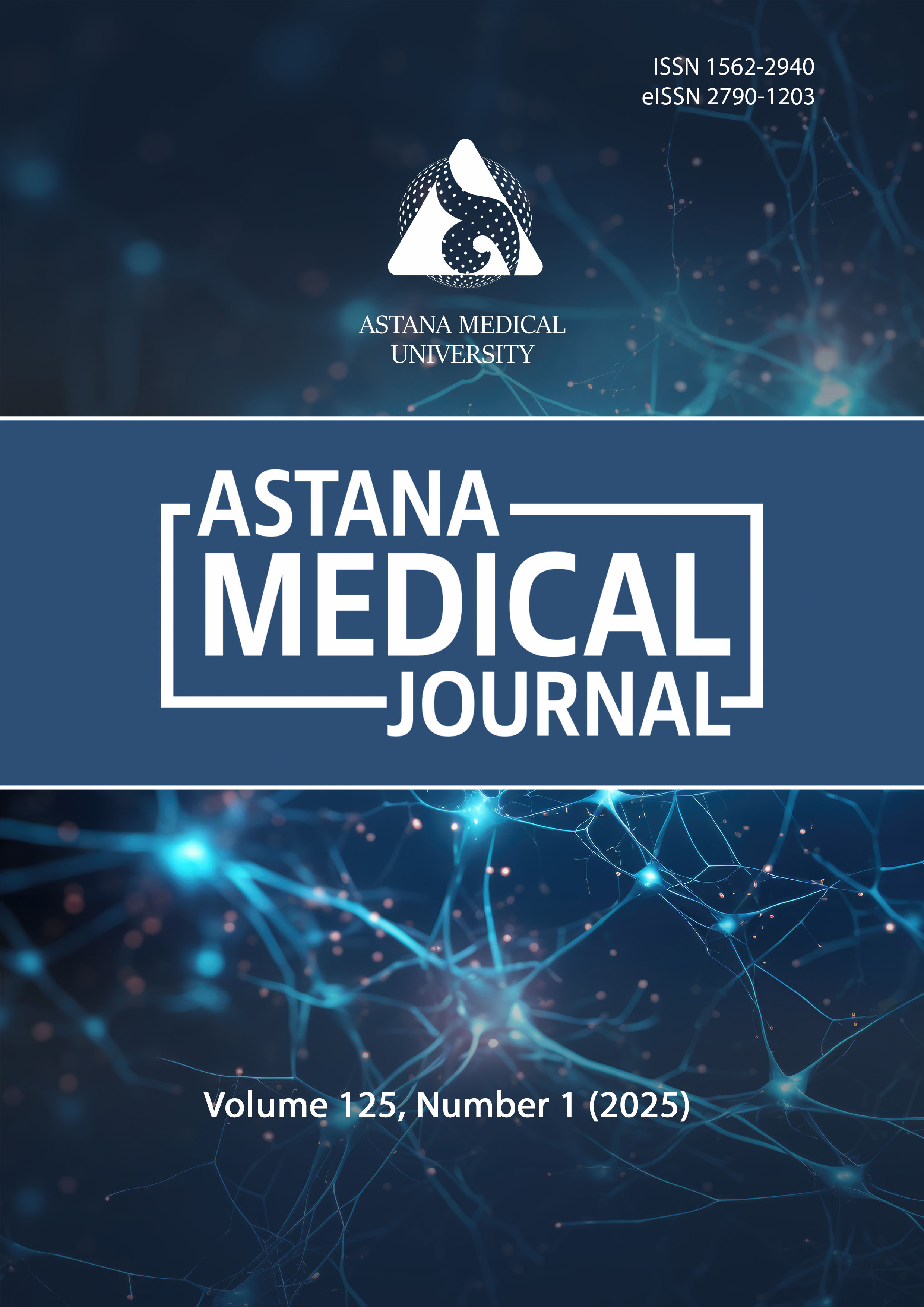Комплексный анализ кишечной микробиоты при хронической сердечной недостаточности: Интеграция метагеномных данных и метаболических путей в контексте патофизиологии заболевания
DOI:
https://doi.org/10.54500/2790-1203-2025-125-1-39-44Ключевые слова:
хроническая сердечная недостаточность, етагеномика, микробиом, метаболитыАннотация
Хроническая сердечная недостаточность (ХСН) является глобальной проблемой здравоохранения, связанной со значительной заболеваемостью и смертностью. Недавние исследования указывают на потенциальную роль кишечной микробиоты в здоровье сердца.
Целью данного исследования было изучение связей между микробными процессами в кишечнике и клиническими проявлениями ХСН.
Методы. В проспективном обсервационном когортном исследовании участвовали пациенты старше 18 лет с верифицированным диагнозом ХСН. Пациенты были стратифицированы на основе эхокардиографических данных. Анализ кишечного микробиома проводился с использованием высокопроизводительного секвенирования и биоинформатических инструментов.
Результаты выявили значительные изменения в составе кишечной микрофлоры у пациентов с ХСН по сравнению со здоровым контролем. Наблюдалось снижение альфа-разнообразия и изменения в бета-разнообразии, указывающие на нарушение баланса микрофлоры. У пациентов с ХСН отмечалось значительное снижение соотношения Firmicutes/Bacteroidetes. На уровне семейств и родов были обнаружены значимые изменения, включая увеличение относительной численности Sutterellaceae, Synergistaceae и ряда условно-патогенных бактерий. Наблюдалось уменьшение относительной численности Bifidobacteriaceae и Coriobacteriaceae, известных своими потенциальными кардиопротективными свойствами.
Выводы. Анализ метаболических путей показал увеличение активности бактерий, связанных с расщеплением белков, и уменьшение активности бактерий, участвующих в переработке углеводов. Это может приводить к образованию потенциально вредных веществ в кишечнике. Результаты исследования открывают новые перспективы для диагностики и лечения ХСН. Анализ состава кишечных бактерий может стать дополнительным инструментом в оценке состояния пациентов с ХСН, а коррекция состава кишечной микрофлоры может быть рассмотрена как часть комплексного лечения.
Скачивания
Библиографические ссылки
Savarese, G., Becher, P. M., Lund, L. H., Seferovic, P., Rosano, G. M., Coats, A. J. (2022). Global burden of heart failure: a comprehensive and updated review of epidemiology. Cardiovascular research, 118(17), 3272-3287. https://doi.org/10.1093/cvr/cvac013
Sapna, F. N. U., Raveena, F. N. U., Chandio, M., Bai, K., Sayyar, M., Varrassi, G., Mohamad, T. (2023). Advancements in heart failure management: a comprehensive narrative review of emerging therapies. Cureus, 15(10). https://doi.org/10.7759/cureus.46486
Almeida, C., Gonçalves-Nobre, J. G., Alpuim Costa, D., Barata, P. (2023). The potential links between human gut microbiota and cardiovascular health and disease-is there a gut-cardiovascular axis?. Frontiers in Gastroenterology, 2, 1235126. https://doi.org/10.3389/fgstr.2023.1235126
Desai, D., Desai, A., Jamil, A., Csendes, D., Gutlapalli, S. D., Prakash, K., Khan, S. (2023). Re-defining the Gut Heart Axis: A Systematic Review of the Literature on the Role of Gut Microbial Dysbiosis in Patients With Heart Failure. Cureus, 15(2). https://doi.org/10.7759/cureus.34902
Petruzziello, C., Saviano, A., Manetti, L. L., Macerola, N., Ojetti, V. (2024). The Role of Gut Microbiota and the Potential Effects of Probiotics in Heart Failure. Medicina, 60(2), 271. https://doi.org/10.3390/medicina60020271
Diez-Gutiérrez, L., San Vicente, L., Barrón, L. J. R., del Carmen Villarán, M., Chávarri, M. (2020). Gamma-aminobutyric acid and probiotics: Multiple health benefits and their future in the global functional food and nutraceuticals market. Journal of Functional Foods, 64, 103669. https://doi.org/10.1016/j.jff.2019.103669
Tang, J., Wei, Y., Pi, C., Zheng, W., Zuo, Y., Shi, P., Zhao, L. (2023). The therapeutic value of bifidobacteria in cardiovascular disease. npj Biofilms and Microbiomes, 9(1), 82. https://doi.org/10.1038/s41522-023-00448-7
Azuma, N., Saito, Y., Nishijima, T., Aoki, R., Nishihira, J. (2024). Effect of daily ingestion of Bifidobacterium and dietary fiber on vascular endothelial function: a randomized, double-blind, placebo-controlled, parallel-group comparison study. Bioscience, Biotechnology, and Biochemistry, 88(1), 86-96. https://doi.org/10.1093/bbb/zbad148
Zhang, Y. L., Li, Z. J., Gou, H. Z., Song, X. J., Zhang, L. (2022). The gut microbiota–bile acid axis: A potential therapeutic target for liver fibrosis. Frontiers in Cellular and Infection Microbiology, 12, 945368. https://doi.org/10.3389/fcimb.2022.945368
Tang WH, Kitai T, Hazen SL. Gut Microbiota in Cardiovascular Health and Disease. Circ Res. 2017 Mar 31;120(7):1183-1196. https://doi.org/10.1161/circresaha.117.309715
Luedde, M., Winkler, T., Heinsen, F. A., Rühlemann, M. C., Spehlmann, M. E., Bajrovic, A., Frey, N. (2017). Heart failure is associated with depletion of core intestinal microbiota. ESC Heart failure, 4(3), 282-290. https://doi.org/10.1002/ehf2.12155
Kamo, T., Akazawa, H., Suda, W., Saga-Kamo, A., Shimizu, Y., Yagi, H., Komuro, I. (2017). Dysbiosis and compositional alterations with aging in the gut microbiota of patients with heart failure. PloS one, 12(3), e0174099. https://doi.org/10.1371/journal.pone.0174099
Wang, Z., Klipfell, E., Bennett, B. J., Koeth, R., Levison, B. S., DuGar, B., Hazen, S. L. (2011). Gut flora metabolism of phosphatidylcholine promotes cardiovascular disease. nature, 472(7341), 57-63. https://doi.org/10.1038/nature09922
Cui, X., Ye, L., Li, J., Jin, L., Wang, W., Li, S., Cai, J. (2018). Metagenomic and metabolomic analyses unveil dysbiosis of gut microbiota in chronic heart failure patients. Scientific reports, 8(1), 635. https://doi.org/10.1038/s41598-017-18756-2
Kummen, M., Holm, K., Anmarkrud, J. A., Nygård, S., Vesterhus, M., Høivik, M. L., Hov, J. R. (2017). The gut microbial profile in patients with primary sclerosing cholangitis is distinct from patients with ulcerative colitis without biliary disease and healthy controls. Gut, 66(4), 611-619. https://doi.org/10.1136/gutjnl-2015-310500
Tang, W. W., Wang, Z., Kennedy, D. J., Wu, Y., Buffa, J. A., Agatisa-Boyle, B., Hazen, S. L. (2015). Gut microbiota-dependent trimethylamine N-oxide (TMAO) pathway contributes to both development of renal insufficiency and mortality risk in chronic kidney disease. Circulation research, 116(3), 448-455. https://doi.org/10.1161/CIRCRESAHA.116.305360
Falconi, C. A., Junho, C. V. D. C., Fogaça-Ruiz, F., Vernier, I. C. S., Da Cunha, R. S., Stinghen, A. E. M., Carneiro-Ramos, M. S. (2021). Uremic toxins: an alarming danger concerning the cardiovascular system. Frontiers in physiology, 12, 686249. https://doi.org/10.3389/fphys.2021.686249
Lin, C. J., Wu, V., Wu, P. C., Wu, C. J. (2015). Meta-analysis of the associations of p-cresyl sulfate (PCS) and indoxyl sulfate (IS) with cardiovascular events and all-cause mortality in patients with chronic renal failure. PloS one, 10(7), e0132589. https://doi.org/10.1371/journal.pone.0132589









